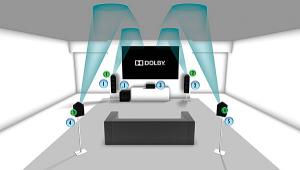Nice post! This is a very nice blog that I will definitively come back to more times this retro bowl unblocked year!
Bass Management Boot Camp

Like marching and making your bunk, bass management looks easy. But sometimes there’s a huge difference between doing seemingly straightforward tasks, and doing them right.
Bass management is just a way to separate audio signals inside your A/V receiver or surround processor so that the bass is sent only to the speakers that can handle it. If you do bass management the sloppy way, you’ll end up with a sonic mess on your hands: bloated or thin voices, distortion, and maybe even a blown woofer.
What fresh home theater recruits need is a bass management drill sergeant, someone who can turn them into hardened soldiers for better sound. I’m just the guy to do it. Not only have I spent 20 years in the trenches reviewing audio/video gear, I used to work at Dolby Laboratories, the company that practically invented bass management.
Getting bass management right takes knowledge, discipline, and effort — and a lot of other stuff your mommy never taught you. You got that?
I can’t hear you!
(Now’s the time when you yell, “Sir! Yes, sir!” But it’s probably better if you just think it. Especially if you’re reading this on an airplane.)
My job is to break you down, flush all that junk you’ve heard about bass management out of your head, and teach you the skills you’ll need to get your subwoofer to blend perfectly with your main speakers. Are you up to it? Or are you just gonna crawl back to the default settings on your receiver? We’ll see . . .
Okay, Listen Up!
Bass management is nothing more than a crossover: a low-pass filter that keeps midrange and treble out of your subwoofer, and a high-pass filter that keeps bass out of any speakers too puny to reproduce it. It’s built into every receiver with Dolby Digital, and with a few obscure exceptions, it also works on any other audio technology your receiver has, including DTS, Dolby TrueHD, and DTS-HD Master Audio.
In its simplest form, bass management demands only that you select a “large” or “small” setting for your front left/right, center, and surround speakers, and tell the receiver if you’re using a subwoofer. But while you’ll still find such rudimentary bass management in cheap receivers and in Blu-ray and DVD players, most current receivers let you select the frequency at which the crossover occurs, and many let you select different frequencies for the front, center, and surround speakers. Some go even further.
- Log in or register to post comments

There is a lot of information out there that can help anyone start a successful social media effort shell shockers

























































